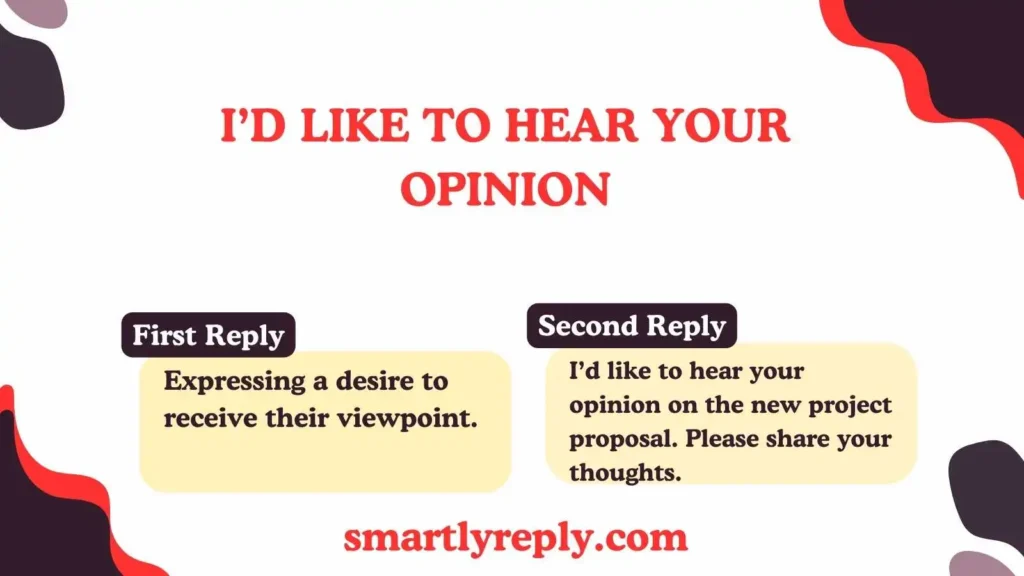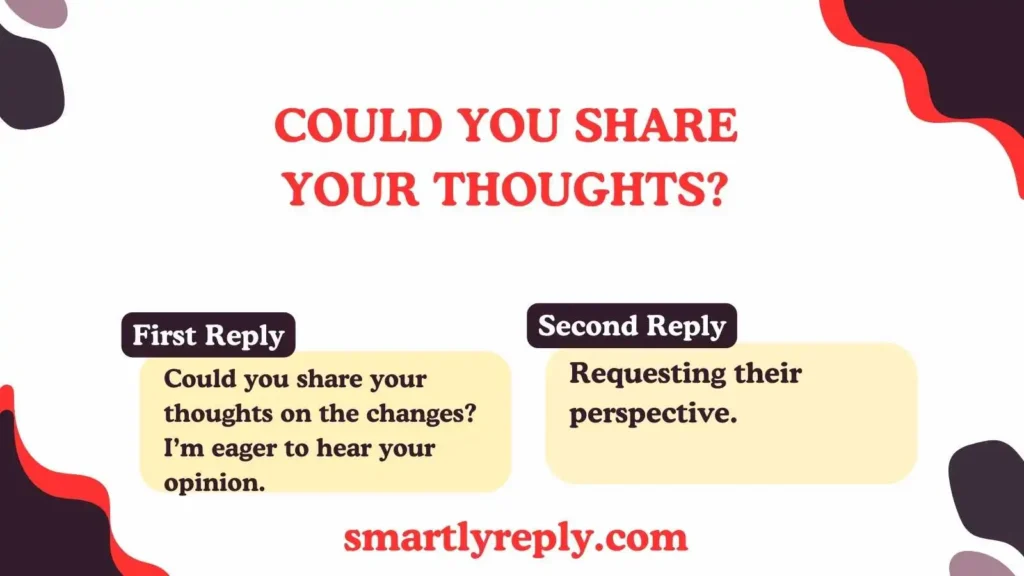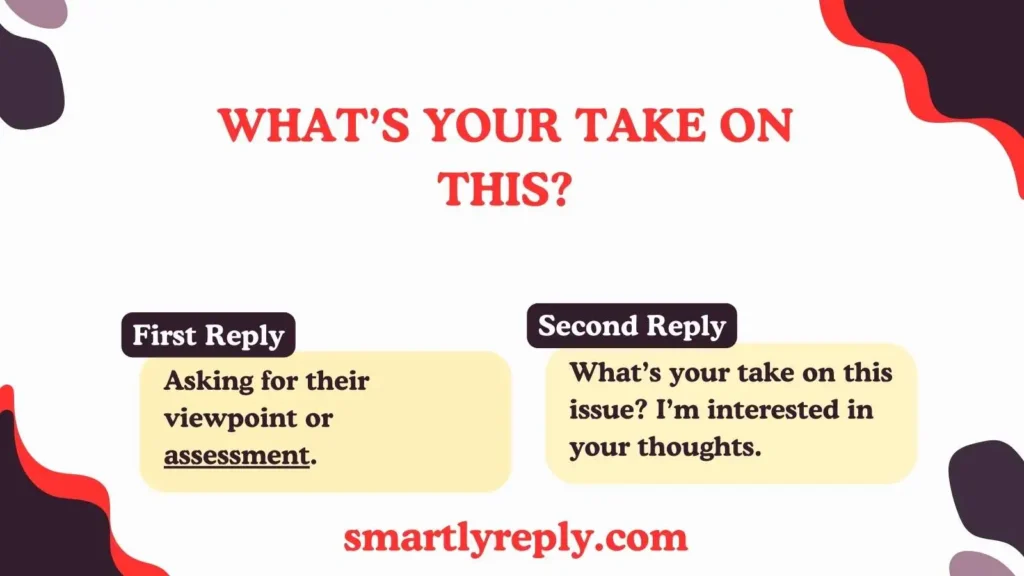Last Updated on November 14, 2024 by
Looking for polite and engaging alternatives to “Please let me know what you think”? Sometimes a simple change in wording can make your requests feel more personable and encourage genuine feedback. This guide explores phrases that help spark meaningful responses while maintaining professionalism.
If you’re looking to request feedback or opinions in different ways, here are 20 alternative phrases to “please let me know what you think,”
each with a brief definition and example:
1. “I’d Like to Hear Your Opinion”

Definition: Expressing a desire to receive their viewpoint.
Example: “I’d like to hear your opinion on the new project proposal. Please share your thoughts.”
2. “Let Me Know Your Thoughts”
Definition: Asking for their perspective.
Example: “Let me know your thoughts on the updated design. Your feedback is important.”
3. “Please Share Your Feedback”
Definition: Requesting detailed comments or opinions.
Example: “Please share your feedback on the draft. I value your insights.”
4. “What Are Your Views on This?”
Definition: Inquiring about their perspective.
Example: “What are your views on the proposed changes? I’d appreciate your input.”
5. “I’m Interested in Your Thoughts”
Definition: Showing interest in their opinion.
Example: “I’m interested in your thoughts regarding the new policy. Let me know what you think.”
6. “Can You Provide Your Feedback?”
Definition: Requesting detailed comments or opinions.
Example: “Can you provide your feedback on this idea? I’d like to hear your take.”
7. “Please Offer Your Insights”
Definition: Asking for their detailed observations or opinions.
Example: “Please offer your insights on the proposal. Your perspective will be helpful.”
8. “What’s Your Opinion on This?”
Definition: Seeking their judgment or assessment.
Example: “What’s your opinion on the latest updates? Let me know your thoughts.”
9. “I’d Appreciate Your Input”
Definition: Indicating that their feedback is valued.
Example: “I’d appreciate your input on the new strategy. Please let me know what you think.”
10. “Could You Share Your Thoughts?”

Definition: Requesting their perspective.
Example: “Could you share your thoughts on the changes? I’m eager to hear your opinion.”
11. “Please Let Me Know Your Views”
Definition: Asking for their perspective or opinions.
Example: “Please let me know your views on the proposed agenda. Your feedback is welcome.”
12. “How Do You Feel About This?”
Definition: Inquiring about their feelings or opinions.
Example: “How do you feel about the new plan? Your feedback will help us move forward.”
13. “What Do You Think of This Proposal?”
Definition: Seeking their opinion on a specific proposal.
Example: “What do you think of this proposal? I look forward to your feedback.”
14. “Can You Let Me Know Your Opinion?”
Definition: Asking for their viewpoint or judgment.
Example: “Can you let me know your opinion on the draft? Your thoughts are valuable.”
15. “I’d Like to Get Your Thoughts”
Definition: Requesting their perspective on a topic.
Example: “I’d like to get your thoughts on the new project. Please share your feedback.”
16. “Please Let Me Know How You Feel About This”
Definition: Inquiring about their feelings or reactions.
Example: “Please let me know how you feel about this change. Your input will be appreciated.”
17. “What’s Your Take on This?”

Definition: Asking for their viewpoint or assessment.
Example: “What’s your take on this issue? I’m interested in your thoughts.”
18. “Please Provide Your Thoughts”
Definition: Requesting their feedback or perspective.
Example: “Please provide your thoughts on the proposed changes. I’d value your input.”
19. “Let Me Know If You Agree”
Definition: Asking for confirmation of agreement or thoughts.
Example: “Let me know if you agree with the proposed plan. I look forward to your feedback.”
20. “Could You Give Me Your Thoughts?”
Definition: Requesting their opinion or feedback.
Example: “Could you give me your thoughts on the presentation? Your insights will be helpful.”
These alternatives offer a variety of ways to ask for feedback or opinions, allowing you to tailor your requests to different contexts and preferences.
FAQs
1. Why Should I Use Alternatives to “Please Let Me Know What You Think”?
Using alternative phrases to “Please let me know what you think” can make your communication more engaging and show thoughtfulness. It helps you stand out and can better suit different contexts, making your message feel more personal and considerate.
2. What Are Some Professional Alternatives to “Please Let Me Know What You Think”?
In a professional setting, alternatives like “I’d value your feedback,” “Your input is appreciated,” or “Could you share your thoughts?” convey a similar request in a way that feels polished and considerate. These phrases can help build a collaborative environment and encourage open communication.
3. How Can I Politely Ask for Feedback in a Casual Conversation?
In a casual context, you might use phrases like “What are your thoughts?” or “I’d love to hear what you think!” These alternatives keep the tone friendly and approachable, making it easier to ask for feedback without sounding too formal.
4. Are There Phrases That Make Feedback Requests Sound More Urgent?
If you need immediate feedback, try phrases like “Could you let me know as soon as possible?” or “I’d appreciate a quick response.” These convey a sense of urgency without being pushy, which can be essential in time-sensitive situations.
5. Can Changing My Wording Really Impact How People Respond?
Absolutely! The way you phrase a request can influence how engaged and responsive the other person feels. Using polite and thoughtful wording makes it more likely that people will provide genuine feedback, as they feel respected and valued.
Conclusion
Seeking feedback on your message is essential for clear and effective communication. Instead of saying, “Please let me know what you think,” try phrases like “I’d love to hear your thoughts” or “Your insights would be invaluable.” Using these alternative expressions not only conveys respect but also makes your request sound more professional and engaging.


